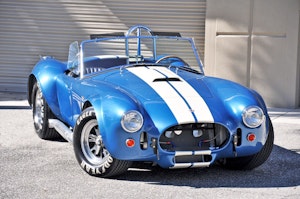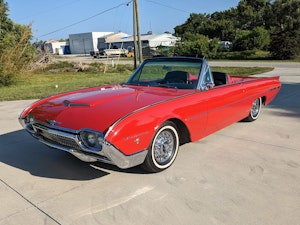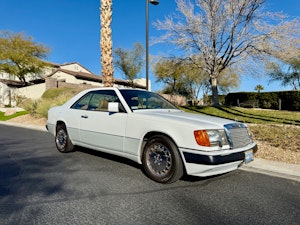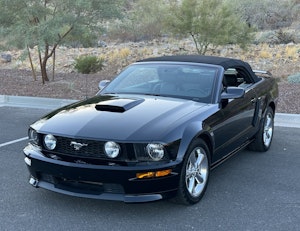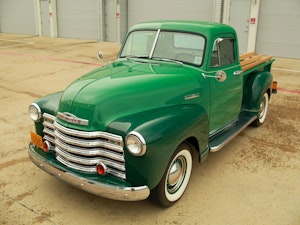The big story of a tiny little car
As Vice President, Collection & Research, at the Canada Science and Technology Museums Corporation in the capital city of Ottawa, Claude Faubert is in regular contact with one of the country’s most important assortment of historic vehicles. That’s because in his day-to-day job, he is involved in the development and preservation of a collection and archives that comprise 160 rare vintage cars, trucks and motorcycles; 15,000 automotive documents; and 8,000 period ads.
But for the last 40 years, the man harbored a secret wish: to have an antique automobile of his own. Which sounds totally understandable, of course, particularly when you’re surrounded by so many tantalizing examples in the workplace — a situation reminiscent, it seems, of the proverbial cobbler’s child. During those four decades of discreet coveting, Claude’s affection was squarely directed at one and only one model: the quirky-looking Citroën 2CV, which had stolen his heart long ago in France. Eventually, his wish became known by family members, including sons Patrick and Jean-Pascal, as he would often spend time researching, or searching for, the object of desire while gathering miniature replicas of it — solace in small packages.
The 2-Chevaux (pronounced: duh shuvo) is one of those amazing French inventions that, from 1948 to 1990, captured the imagination of buyers the world over. As the story goes, the Michelin family corporation had taken over the bankrupt Citroën group in the mid-’30s. With Pierre Michelin at the helm, right-hand man Pierre-Jules Boulanger was tasked with creating the cheapest and most dependable car ever built, an idea that had been germinating in his mind for many years. Drawing on the expertise of colleagues André Lefebvre and Flaminio Bertoni (yes, him), he saw to it that various prototypes were assembled in complete secrecy.
This unique vehicle had to carry four passengers, plus 110 pounds of potatoes, at 40 mph, over a distance of 60 miles, on 3 liters of gas (roughly 80 mpg). A farmer should be able to drive it with cloggs on and enough headroom ought to be provided for his straw hat. It was crucial that the car’s suspension allow the driver to bring a basket of eggs in the trunk across a plowed field with none showing cracks upon arrival.
The TPV (Toute Petite Voiture or “tiny little car”) was to be readied for the Paris Motor Show of October 1939. Unfortunately, with WWII breaking out a month earlier, things came to a grinding halt. The plans and prototypes were later requisitioned by the occupying Nazis. But Boulanger, now company CEO after the tragic car accident death of Pierre Michelin in 1937, held firm. He even made sure that any existing specimen got buried away or destroyed altogether. The TPV finally made its public debut at the 1948 Paris Motor Show to widespread criticism by the press, much of it derisive. “Does it come with a can opener?” a journalist asked.
But frugality had become the “in” thing and the people prevailed, flocking in droves around this singular new design. The 2CV became such hot property that it could take more than five years to receive one on order, unless you were a doctor, parish priest or farmer. A used model was more expensive than buying new, just because you would get it faster. Merely 100,000 of the 2 million French pre-war cars remained on the road, so Citroën’s timing was perfect to push the cheapest ($650) and most dependable car on the planet to a rural audience, one of its main niche markets.
Marketplace
Buy and sell classics with confidence
The 2CV’s body hardly changed much over time, except for subtle trim modifications and updates on the engine, transmission and brakes. The car sold extensively in Europe, Africa, South America and the Middle East, while featuring in some 35 movies and on 18 postage stamps. Few if any automobiles can claim such fame. Yet, none endured so many nasty nicknames wherever it went, including: “the ugly duckling,” “snail,” “frog,” “tin can” or “flying rag top” in the U.S. Despite an international current of mockery, the tiny little car just kept on growing, as numerous models got developed by the manufacturer. Among them: utilitarians such as the Sahara and Fourgonnette van; the colorful Charleston and Dolly; and various more “luxurious” editions of the AZ line.
Which brings us back to the incredible story of Claude’s all-original 1966 2CV AZAM, seen here in Etna Gray. Unbeknownst to him, his boys decided in spring 2013 to do something extra special for their dad’s upcoming 65th birthday and offer him his dream car as a post-retirement project. After months of unsuccessful searching/researching, they decided to phone their uncle Jeff, an English teacher living in Saint-Etienne (France) for advice. Answer from across the pond: “I happen to have one, right here, right now.” Strange, the two boys thought. As it turns out, their uncle, acting on behalf of a friend, had shaken hands on a 2CV deal from a local collector — that very same day! Except Jeff was suddenly stuck with the car when said friend informed him he had just bought one, literally hours before. All agreed this astounding twist of fate proved impeccably fortuitous, though bizarre in the extreme. It was then a matter of having the vehicle shipped all the way from south eastern France via the Port of Rotterdam, to that of Montreal, and onto home base in Ottawa.
So last November, Claude was literally thunderstruck when he opened his garage door one morning to find the tiny little car just sitting there, staring at him. Thanks to the resourcefulness and generosity of his loving sons, the cobbler’s child finally has shoes of his own, rubber soles and all, to indulge his long-neglected passion. Which gives new meaning to the old idiom “where the rubber meets the road” for the most grateful of dads who can now cruise along in a French icon that continues to defy fashion, culture and time.

